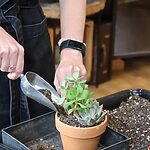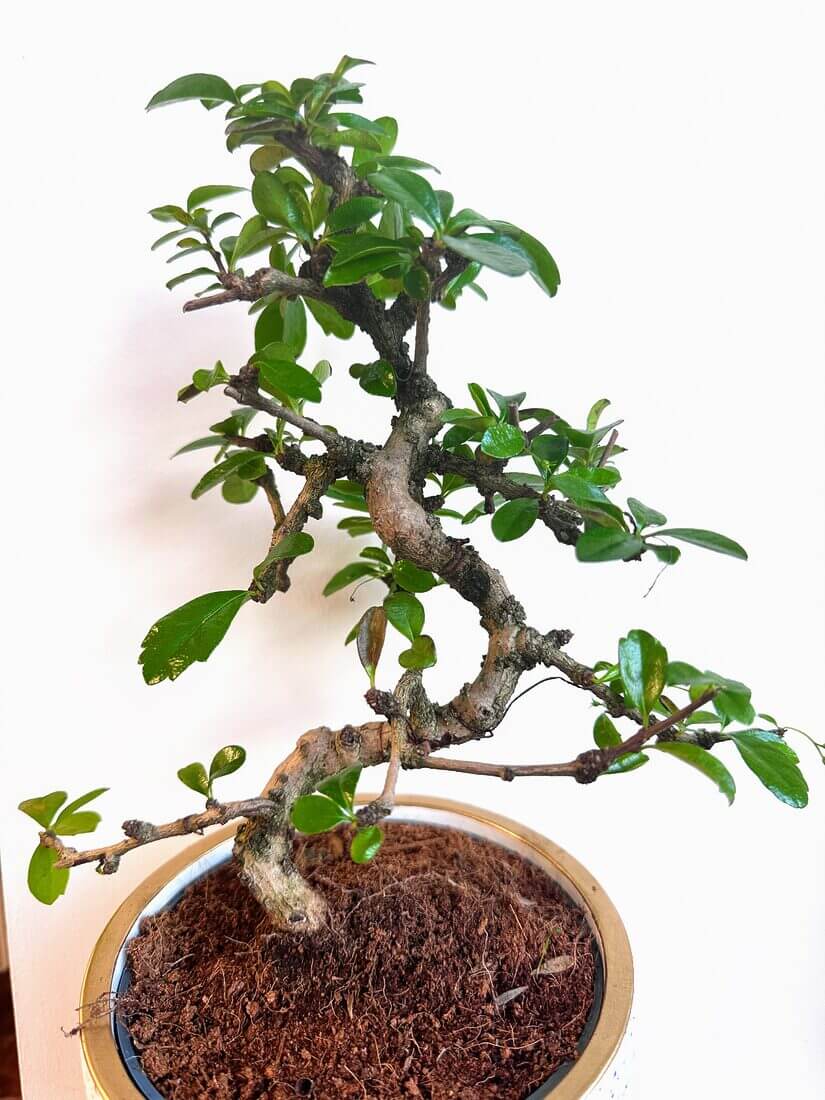Winter is a time of rest and recuperation for your houseplants. The shorter days and cooler temperatures signal many plants to slow their growth or even go dormant. During this period, your plants require less attention but still need some care to remain healthy. Here’s a detailed guide to help you look after your houseplants during the winter months.
Water Less Frequently
In winter, most houseplants go into dormancy or slow their growth. As a result, their water needs decrease significantly. Overwatering is a common mistake during this time and can lead to root rot.
- Every plant is different. Some, like succulents, may need watering every few weeks, while tropical varieties might require more frequent attention. Check your plant’s needs using our care guides or guide generator.
- When in doubt, let it dry out slightly: During the colder months, it’s better to under-water than over-water. A plant that’s too dry is easier to revive than one suffering from root rot.
Avoid Watering with Snow or Icy Water
Using melted snow or icy water to hydrate your plants can do more harm than good. While it might seem like a natural option, it can negatively impact your plant’s health in several ways:
- Cold Damage to Leaves: Splashing icy water or snow on leaves can cause chilling injuries. This can lead to discolouration, wilting, or even tissue death in sensitive plants.
- Thermal Shock to Roots: Houseplant roots are adapted to consistent, moderate temperatures. Ice-cold water can shock the root system, reducing the plant’s ability to absorb nutrients and water efficiently.
- No Added Benefit: Snow or icy water doesn’t provide any unique advantages to your plant. It’s much safer and healthier to use room-temperature water (around 20°C/68°F) to ensure your plants stay comfortable and stress-free.
Maximize Light Exposure
Shorter daylight hours mean your plants get less natural sunlight. Moving them closer to a bright window can help them get the needed light.
- South-facing windows are ideal for capturing the most sunlight in winter.
- Rotate plants occasionally to ensure even light exposure.
Slow Down or Stop Fertilizing
You can slow down or even stop feeding your plants during winter. If you’re using high-quality soil and repot them regularly, plants will have enough nutrition for a while. Most houseplants will be perfectly fine without fertilizer during the colder months.
However, to support the needs of ‘hungry’ plants like Monstera adansonii, continue providing plant food at a reduced rate.
Resume full feeding schedules in spring when growth becomes more vigorous.
Check for Pests Regularly
While pests tend to be less active during winter, they don’t disappear entirely. Some, like mealybugs or thrips, may go dormant or remain in hiding, only to appear when you least expect them. Skipping regular pest checks can lead to infestations.
- Inspect leaves, stems, and the undersides of foliage for signs of pests.
- Treat any infestation promptly with appropriate pest control methods like eco-friendly pest spray or neem oil.
Clean Leaves Regularly
Dust tends to accumulate more on houseplants during winter, which can block light and make your plants more vulnerable to pests. Cleaning your plant’s leaves ensures they stay healthy, look great, and absorb the limited light more effectively.
- Use a damp, soft cloth to wipe down leaves gently.
- For plants with many small leaves, try misting and wiping lightly.
Tip: Shiny, clean leaves are healthy and make your plants look their best.
Understand Dormancy
Not all plants behave the same way in winter. While some may slow down completely, others, such as tropical houseplants, may continue to grow if conditions are right.
For some plants, dormancy can be dramatic, making them appear dead. For example, Venus flytraps and other carnivorous plants often lose their leaves and enter a dormant state during winter. This can be easily mistaken for the plant dying, leading to unnecessary panic or even disposal.
These plants are not dead; they just require slightly different care during dormancy to thrive. Providing the right environment will allow them to flourish again in spring.
Tip: Always research your plant’s specific dormancy needs to ensure you give them the right care during their resting phase. View our article to learn more about dormancy.
Avoid Temperature Extremes
Winter drafts and heat sources can stress your plants. Most houseplants thrive in stable, moderate temperatures between 16–24°C (60–75°F).
- Keep plants away from radiators, fireplaces, and heaters.
- Avoid placing them near cold, drafty windows or doors.
Continue Repotting and Propagating if Conditions Are Right
If your living space provides enough sunlight, warmth, and humidity, many houseplants can keep growing during winter. If your Monstera has outgrown its pot, repot it now rather than waiting for summer. Plants struggling in poor-quality soil will also benefit from fresh potting mix. Consider adding a moss pole to support climbing varieties.
The same goes for propagation! Make a few cuttings of your favourite Philodendron or Maranta and root them in water or sphagnum moss. Check out our article, which will help you propagate pants easily and fast!

Don’t Panic About Leaf Drop
Some plants naturally shed a few leaves during winter as part of their energy conservation process, and this is perfectly normal.
- Resist the urge to water more or feed them in response.
- Prune dead or yellowing leaves to maintain the plant’s appearance.
Enjoy the Low Maintenance
Winter is a season of rest not just for plants but for you, too! It’s a great time to step back and let your plants recharge. While some may not look as vibrant or grow as fast, they’re simply preparing for a burst of energy when spring comes.
Extra Winter Plant Care Tips
Here are some additional tips to ensure your houseplants stay healthy and happy during the winter months:
1. Group Plants Together
- Placing plants close to each other can create a microclimate with higher humidity levels, which is especially beneficial in dry, heated indoor environments.
- Be cautious not to overcrowd them, as poor air circulation can encourage pests or fungal issues.
2. Use a Humidifier
- Many houseplants, particularly tropical varieties, thrive in higher humidity levels. Using a humidifier can help maintain ideal conditions, especially in heated homes where the air becomes dry.
- Alternatively, place a tray of water with pebbles near your plants or mist them lightly (if they’re not prone to fungal issues).
3. Protect Pots from Cold Surfaces
- If your plants are on windowsills or cold floors, place a coaster or a layer of cork beneath the pot to prevent the roots from getting too cold.
4. Aerate the Soil
- Soil tends to compact over time, reducing airflow to the roots. Use a chopstick or similar tool to gently loosen the top layer of soil, ensuring oxygen can reach the roots.
5. Avoid Drafty Areas
- Keep plants away from frequently opened doors, poorly sealed windows, or vents. Sudden temperature changes can harm sensitive plants.
6. Adjust Light for Seasonal Changes
- Consider using grow lights if your home has limited natural light. Choose full-spectrum LED lights to supplement the reduced daylight hours and keep your plants growing steadily.
Conclusion
Caring for your houseplants during winter doesn’t have to be complicated. By understanding their needs and making small adjustments, you can ensure they remain healthy and strong throughout the colder months. Whether it’s watering less, maintaining stable temperatures, or improving light and humidity, these simple practices can make all the difference.
Winter is a time of rest for your plants, and with your care, they’ll be ready to thrive again when spring arrives. Remember, all plants purchased from Highland Moss come with a scannable QR code for detailed care guides. Visit our shop to find your next favourite houseplant!

















